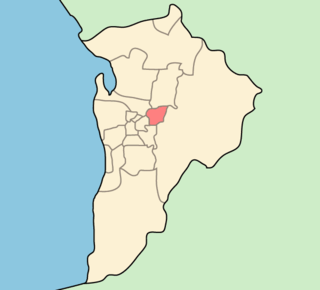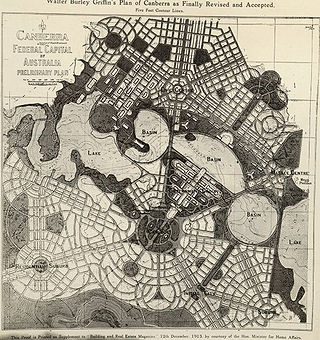
Donald Allan Dunstan was an Australian politician who served as the 35th premier of South Australia from 1967 to 1968, and again from 1970 to 1979. He was a member of the House of Assembly (MHA) for the division of Norwood from 1953 to 1979, and leader of the South Australian Branch of the Australian Labor Party from 1967 to 1979. Before becoming premier, Dunstan served as the 38th attorney-general of South Australia and the treasurer of South Australia. He is the fourth longest serving premier in South Australian history.

Raymond Steele Hall is a former Australian politician who served as the 36th Premier of South Australia from 1968 to 1970. He also served in the federal Parliament as a senator for South Australia from 1974 to 1977 and federal member for the Division of Boothby from 1981 to 1996.

The City of Playford is a local government area of South Australia in Adelaide's northern suburbs. It was named in recognition of Sir Thomas Playford, who played a part in the development of the area, and was South Australia's premier from 1938–1965. The city covers an area of 345 km2 (133 sq mi), and is home to over 90,000 residents. Playford was the fastest growing local government area in South Australia in the 2010s.

Elizabeth is an outer northern suburb of the Adelaide metropolitan area, South Australia, 24 km north of the Adelaide city centre. It is located in the City of Playford. At the 2021 census, Elizabeth had a population of 40,343.

The City of Campbelltown is a local government area in the north eastern suburbs of Adelaide, South Australia about 6 kilometres from the Adelaide GPO. The city is bordered by the River Torrens and the City of Tea Tree Gully, the District of Adelaide Hills, the City of Burnside, the City of Norwood Payneham St Peters, and the City of Port Adelaide Enfield.
The Electricity Trust of South Australia (ETSA) was the South Australian Government-owned monopoly vertically integrated electricity provider from 1946 until its privatisation in 1999.
The Playmander was a pro-rural electoral malapportionment in the Australian state of South Australia, which was introduced by the incumbent Liberal and Country League (LCL) government in 1936, and remained in place for 32 years until 1968.
Monarto is a locality in South Australia 16 km (9.9 mi) west of the Murray River. It is north of the South Eastern Freeway between the Callington and Murray Bridge exits 63 km from Adelaide.

Sir Thomas Playford was an Australian politician from the state of South Australia. He served as Premier of South Australia and leader of the Liberal and Country League (LCL) from 5 November 1938 to 10 March 1965. Though controversial, it was the longest term of any elected government leader in Australian history. His tenure as premier was marked by a period of population and economic growth unmatched by any other Australian state. He was known for his parochial style in pushing South Australia's interests, and was known for his ability to secure a disproportionate share of federal funding for the state as well as his shameless haranguing of federal leaders. His string of election wins was supported by a system of malapportionment later dubbed erroneously, the "Playmander".

State elections were held in South Australia on 30 May 1970. All 47 seats in the South Australian House of Assembly were up for election. The incumbent Liberal and Country League led by Premier of South Australia Steele Hall was defeated by the Australian Labor Party led by Leader of the Opposition Don Dunstan.

Albert Percy Blesing was a farmer and politician from South Australia who served as Minister for Agriculture (1933–1944), for Local Government (1933–1938) and for Afforestation (1938–1944). He was a founding member of the Country Party in South Australia and served in the governments of Richard Layton Butler and Thomas Playford IV.
Migrant hostels of South Australia are hostels where thousands of migrants passed from the 1940s to the 1980s. In South Australia these included Elder Park, Gawler, Gepps Cross, Glenelg, Hendon, Mallala, Pennington/Finsbury, Peterborough, Rosewater, Salisbury, Semaphore, Smithfield, Willaston, Whyalla, Woodside and Woodville. The hostels were temporary homes to a wide range of migrants, from Displaced Persons and refugees, through to "Ten Pound Poms".
Hendon is a north-western suburb of Adelaide, South Australia, 9.8 km from the Adelaide city centre. It is located in the City of Charles Sturt.
Davoren Park is a suburb at the northern extent of the Adelaide metropolitan area, South Australia in the City of Playford. The suburb was formed as part of a merger between Elizabeth Field and the northern part of Elizabeth West on 11 November 1993. It is named after the Davoren family, who were early pioneers of the area.

Stephen Yarwood is an Australian urban futurist and the former lord mayor of the City of Adelaide in South Australia, serving from 2010 to 2014.
Munno Para is a northern suburb of Adelaide, South Australia. It is located in the City of Playford.

Urban planning in Australia has a significant role to play in ensuring the future sustainability of Australian cities. Australia is one of the most highly urbanised societies in the world. Continued population growth in Australian cities is placing increasing pressure on infrastructure, such as public transport and roadways, energy, air and water systems within the urban environment.
Horace Cox Hogben was an Australian politician who represented the South Australian House of Assembly multi-member seat of Sturt from 1933 to 1938 for the Liberal and Country League.

The South Australian Liberal Party, officially known as the Liberal Party of Australia (South Australian Division), and often shortened to SA Liberals, is the South Australian Division of the Liberal Party of Australia. It was formed as the Liberal and Country League (LCL) in 1932 and became the South Australian Division of the Liberal Party when the Liberal Party was formed in 1945. It retained its Liberal and Country League name before changing to its current name in 1974. It is one of two major parties in the bicameral Parliament of South Australia, the other being the Australian Labor Party (SA Branch). The party has been led by Leader of the Opposition David Speirs since the 2022 state election after a one-term government.


























